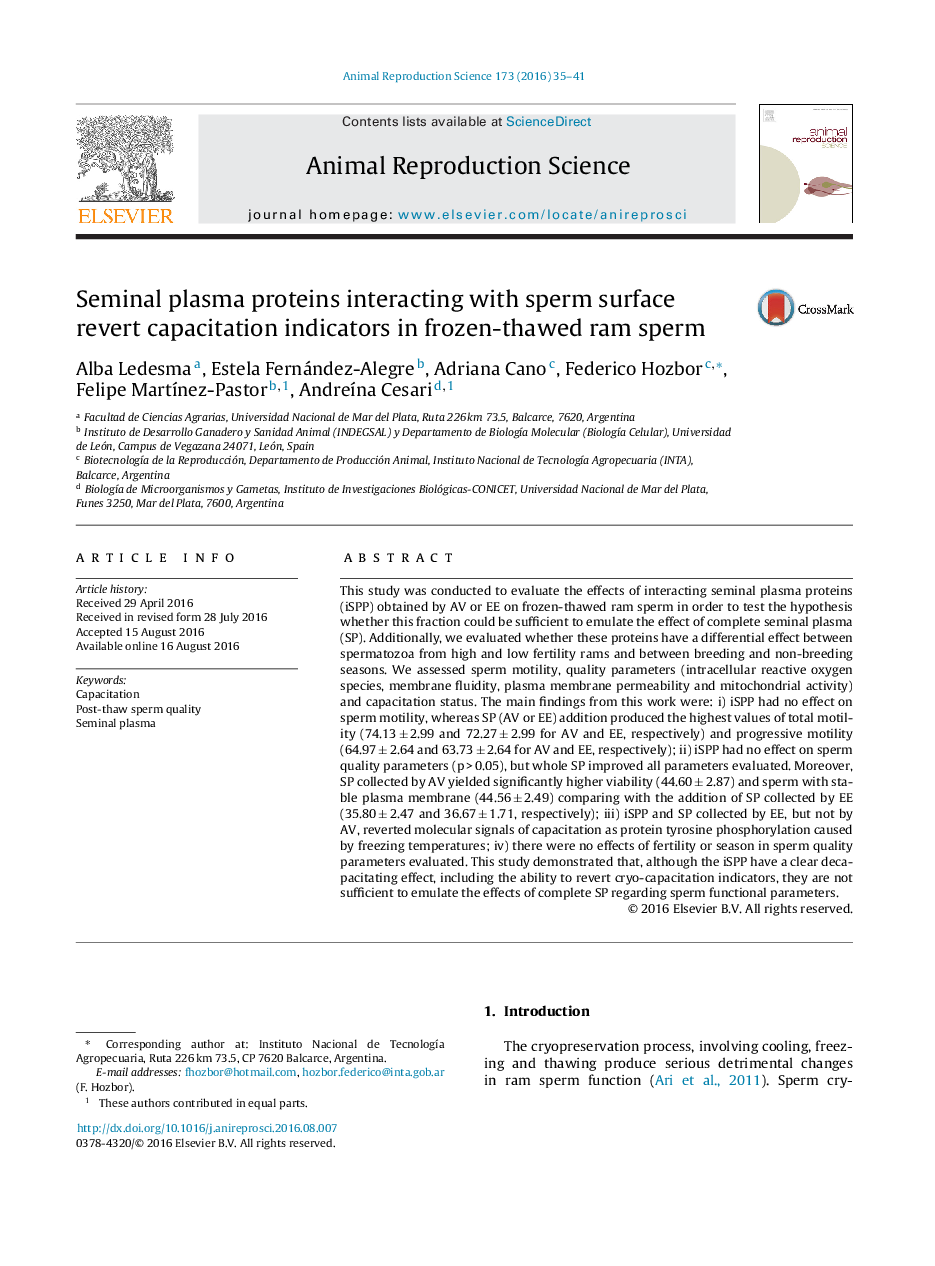| Article ID | Journal | Published Year | Pages | File Type |
|---|---|---|---|---|
| 5520383 | Animal Reproduction Science | 2016 | 7 Pages |
This study was conducted to evaluate the effects of interacting seminal plasma proteins (iSPP) obtained by AV or EE on frozen-thawed ram sperm in order to test the hypothesis whether this fraction could be sufficient to emulate the effect of complete seminal plasma (SP). Additionally, we evaluated whether these proteins have a differential effect between spermatozoa from high and low fertility rams and between breeding and non-breeding seasons. We assessed sperm motility, quality parameters (intracellular reactive oxygen species, membrane fluidity, plasma membrane permeability and mitochondrial activity) and capacitation status. The main findings from this work were: i) iSPP had no effect on sperm motility, whereas SP (AV or EE) addition produced the highest values of total motility (74.13 ± 2.99 and 72.27 ± 2.99 for AV and EE, respectively) and progressive motility (64.97 ± 2.64 and 63.73 ± 2.64 for AV and EE, respectively); ii) iSPP had no effect on sperm quality parameters (p > 0.05), but whole SP improved all parameters evaluated. Moreover, SP collected by AV yielded significantly higher viability (44.60 ± 2.87) and sperm with stable plasma membrane (44.56 ± 2.49) comparing with the addition of SP collected by EE (35.80 ± 2.47 and 36.67 ± 1.71, respectively); iii) iSPP and SP collected by EE, but not by AV, reverted molecular signals of capacitation as protein tyrosine phosphorylation caused by freezing temperatures; iv) there were no effects of fertility or season in sperm quality parameters evaluated. This study demonstrated that, although the iSPP have a clear decapacitating effect, including the ability to revert cryo-capacitation indicators, they are not sufficient to emulate the effects of complete SP regarding sperm functional parameters.
